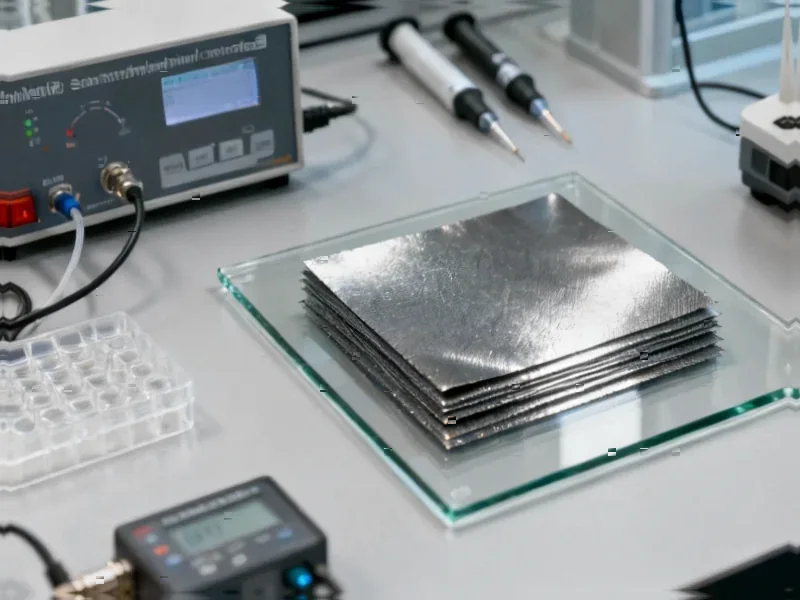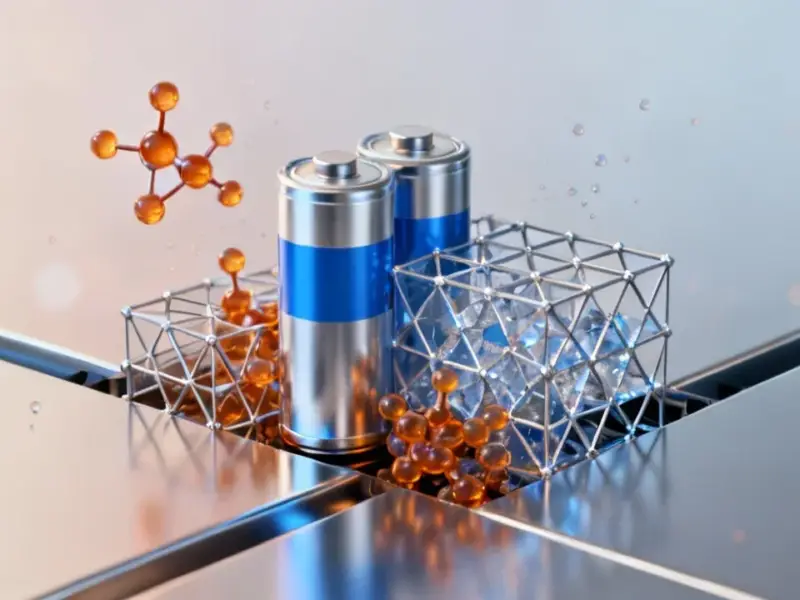According to Phys.org, chemists at the National University of Singapore have discovered that DNA phosphate groups can function as chiral catalysts for producing medicinal compounds with specific mirror-image configurations. The research team led by Assistant Professor Zhu Ru-Yi from the NUS Department of Chemistry demonstrated that DNA’s negatively charged phosphate groups can attract and guide positively charged reactants through “ion-pairing” effects, similar to how magnets align metal beads. They developed a novel “PS scanning” method to identify which specific phosphate positions were critical for reaction selectivity and collaborated with Professor Zhang Xinglong from The Chinese University of Hong Kong on computer simulations to validate their findings. The research, published in Nature Catalysis on October 31, 2025, represents a significant departure from nature’s use of DNA, opening possibilities for more sustainable pharmaceutical manufacturing. This breakthrough suggests DNA’s potential extends far beyond its traditional genetic role.
The Pharmaceutical Manufacturing Revolution
This discovery could fundamentally reshape how pharmaceutical companies approach chiral drug synthesis. Currently, producing single-enantiomer drugs requires complex separation processes or expensive chiral catalysts that often involve rare metals or complex organic molecules. The ability to use DNA as a chiral catalyst offers a more sustainable and potentially cheaper alternative. Pharmaceutical manufacturers facing increasing pressure to reduce environmental impact and production costs now have a biological tool that could replace traditional chemical methods. The timing is particularly significant as the industry grapples with sustainable manufacturing challenges while maintaining precision in drug production.
Winners and Losers in the Catalysis Market
The traditional chiral catalyst market, valued at over $2 billion annually, could face significant disruption from this technology. Companies specializing in metal-based chiral catalysts and complex ligand systems may need to adapt quickly as DNA-based approaches mature. Meanwhile, biotechnology firms with DNA synthesis capabilities could find new revenue streams in producing custom DNA sequences optimized for specific catalytic reactions. The research suggests we’re entering an era where biological molecules could compete directly with synthetic catalysts in industrial applications, potentially creating new alliances between pharmaceutical companies and DNA synthesis specialists.
Sustainability and Regulatory Advantages
Beyond the technical breakthrough, the environmental implications are substantial. DNA is biodegradable, renewable, and doesn’t require the mining of rare metals or complex synthetic processes that generate hazardous waste. This aligns perfectly with growing regulatory pressure on pharmaceutical companies to adopt greener manufacturing practices. The European Medicines Agency and FDA have been increasingly focused on sustainable chemistry in drug approval processes, and DNA-based catalysis could provide manufacturers with both environmental and regulatory advantages. The method’s potential for creating complex, high-value molecules with reduced environmental footprint represents exactly the type of innovation that regulators and consumers are demanding.
Implementation Challenges and Timeline
While promising, widespread adoption faces several hurdles. Scaling DNA-based catalysis from laboratory demonstrations to industrial production will require significant optimization. DNA stability under industrial reaction conditions, production costs for custom DNA sequences, and regulatory approval for new manufacturing processes all present challenges. However, the rapid advancement in DNA synthesis technology and decreasing costs suggest these barriers may be overcome faster than anticipated. We’re likely 3-5 years from seeing pilot-scale applications, but the fundamental breakthrough has already occurred. The research team’s planned exploration of additional applications for drug development suggests this is just the beginning of DNA’s catalytic potential.
Broader Industry Impact Beyond Pharmaceuticals
The implications extend well beyond pharmaceutical manufacturing. Fine chemicals, agrochemicals, and specialty materials industries all rely on chiral synthesis and could benefit from DNA-based catalysis. The ability to precisely control molecular handedness using biological templates could enable new materials with specific optical properties or agricultural chemicals with improved efficacy and reduced environmental persistence. As the technology develops, we may see DNA catalysis becoming a standard tool across multiple chemical industries, representing a fundamental shift toward biologically-inspired manufacturing processes that combine precision with sustainability.




